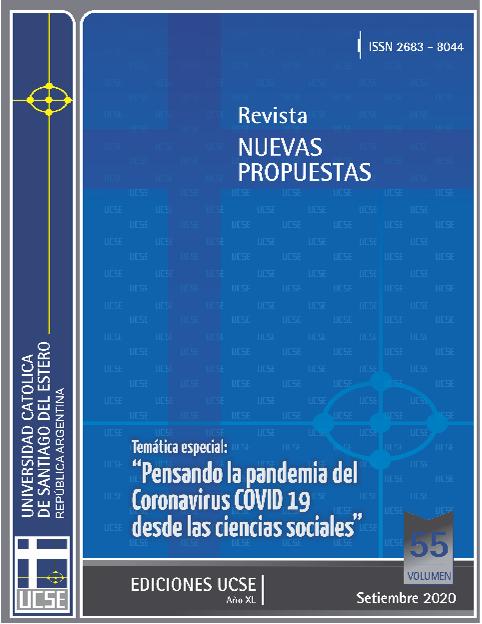Artículo
Ante la Pandemia COVID 19 los establecimientos educativos fueron identificados como focos potenciales de transmisión masiva del virus por lo que cerraron sus puertas, la educación se trasladó a los hogares. La escuela no dejó de funcionar, pero como parte de un sistema educativo fragmentado, su despliegue será diferente en cada sector social. La fragmentación educativa refleja una diversificación en las estructuras sociales, marcando distancias entre grupos sociales. En el presente trabajo pretendemos analizar y reflexionar cómo las escuelas secundarias de la Ciudad Capital de la provincia de Catamarca han continuando sus actividades en los distintos sectores sociales y, lo que cada establecimiento es pera de los alumnos egresados. El material empírico de nuestro estudio proviene de entrevistas semiestructuradas a directivos de escuelas secundarias de la Ciudad Capital de Catamarca y datos de campo recopilados en el cuerpo docente. La pandemia ha profundizado las desigualdades, los sectores más privilegiados se ajustaron rápidamente a la realidad y lograron contener al alumnado, mientras que los más desventajados, en algunos casos perdieron el contacto de docentes con sus estudiantes; para ellos la escuela tradicional, presencial, sigue siendo insustituible más allá de los esfuerzos por continuar con su rol tutelar desde la virtualidad. With the outbreak of the COVID-19 pandemic, schools were identified as potential focal points of the virus massive transmission. That is why they closed their doors and education moved to the students’ homes. Schools did not stop working, but as they form part of a fragmented educational system, the activities they managed to do would be different in each social sector. Educational fragmentation shows a diversification in social structures, setting social groups apart from each other. In this work, we want to analyze and reflect on how the high schools of the capital city of the province of Catamarca have continued their activities in the various social sectors, as well as what each institution expects from their graduates. The empirical material in our study comes from semi-structured interviews we had with principals of the high schools from Catamarca and from field data collected from the teaching staff. The pandemic has deepened inequalities: while the most privileged sectors could quickly adapt to the new reality and managed to support the students, in some cases, the more disadvantaged ones lost contact with their teachers. For the latter, traditional, in-person class is still irreplaceable, no matter the efforts schools make to continue providing for their guardian role from virtual environments.
Escuela secundaria en tiempos de pandemia: La fragmentación del sistema educativo al descubierto
Título:
Secondary school in times of pandemic: The fragmentation of the education system exposed
Fecha de publicación:
09/2020
Editorial:
Universidad Católica de Santiago del Estero
Revista:
Nuevas Propuestas
e-ISSN:
2683-8044
Idioma:
Español
Tipo de recurso:
Artículo publicado
Clasificación temática:
Resumen
Palabras clave:
Escuela secundaria,
,
fragmentación
,
pandemia
,
enseñanza virtual
,
COVID-19
Archivos asociados
Licencia
Identificadores
Colecciones
Articulos(SEDE CENTRAL)
Articulos de SEDE CENTRAL
Articulos de SEDE CENTRAL
Citación
Tapia, María Gabriela; Melendez, Cecilia Evangelina; Escuela secundaria en tiempos de pandemia: La fragmentación del sistema educativo al descubierto; Universidad Católica de Santiago del Estero; Nuevas Propuestas; 55; 50; 9-2020; 60-69
Compartir




